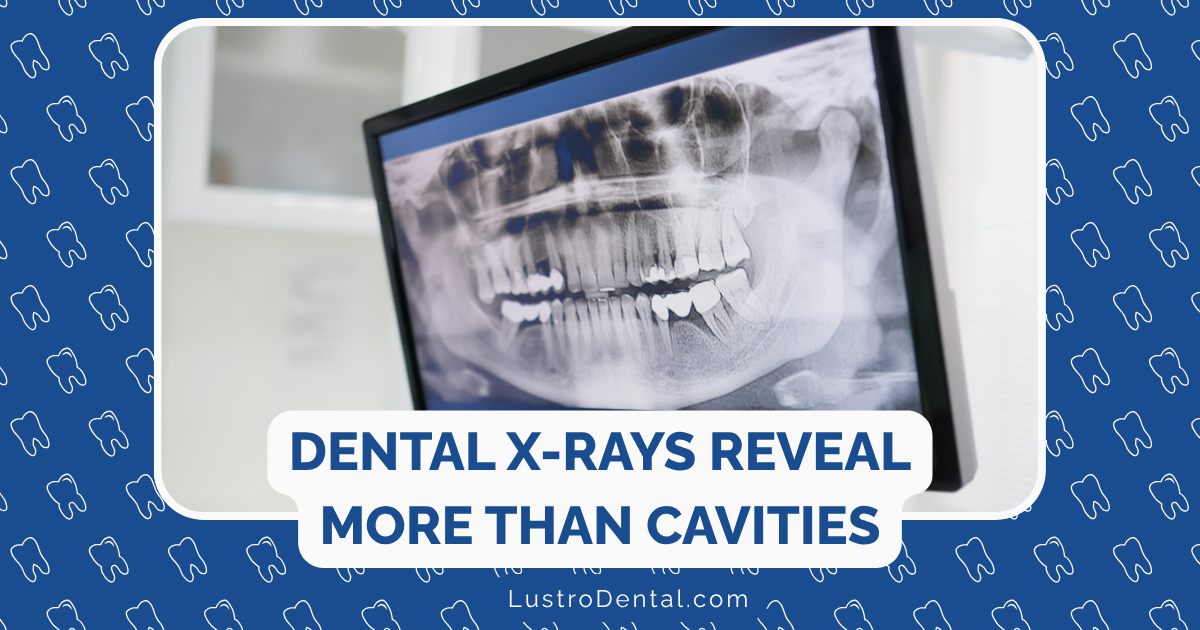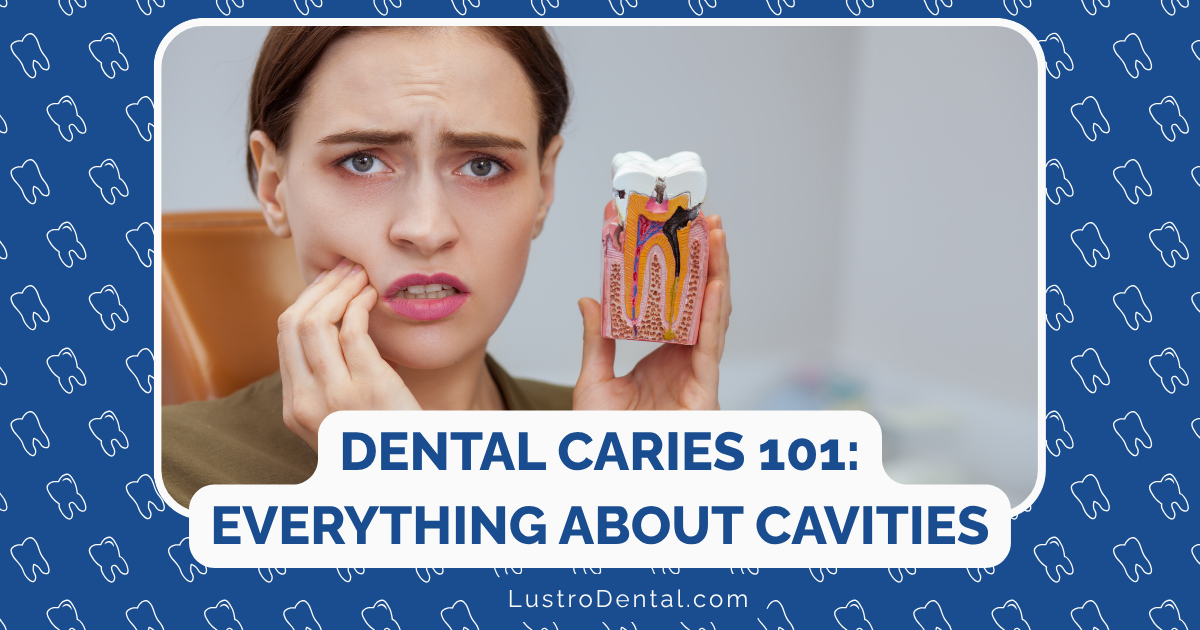Beyond Cavities: What Dental X-rays Can Reveal About Your Overall Health

When most people think about dental X-rays, they imagine a tool for finding cavities or checking on wisdom teeth. But these valuable diagnostic images can reveal far more than just dental issues. As a dental health advocate, I’ve seen firsthand how dental radiographs can provide crucial insights into a patient’s overall health, sometimes detecting serious conditions before other symptoms appear.
In fact, your dental X-rays might be the first place where signs of certain systemic diseases become visible. According to Delta Dental, more than 90 percent of all systemic diseases have oral manifestations, making your routine dental visit potentially lifesaving.
Let’s explore what those dental X-rays might be revealing about your overall health beyond just your teeth.
Bone Health and Osteoporosis
One of the most well-established connections between dental X-rays and systemic health involves bone density and osteoporosis.
How Dental X-rays Detect Bone Issues
Dental X-rays provide a clear view of your jawbone, which can serve as an indicator of overall bone health. Research from Delta Dental’s wellness resources indicates that dentists may be the first healthcare providers to suspect osteoporosis based on what they see in routine dental images.
Signs that might indicate bone density issues include:
- Progressive bone loss around teeth
- Decreasing density of the jawbone compared to previous X-rays
- Thinning of the lower jawbone border
- Changes in the trabecular pattern (the spongy inner bone structure)
For many patients—particularly postmenopausal women, who are at highest risk for osteoporosis—these dental findings might prompt a referral for a comprehensive bone density scan, potentially leading to early intervention before fractures occur.
The Statistics Are Compelling
According to research published in PMC, approximately 10 million Americans have osteoporosis, with 18.8% of women over 50 affected compared to 4.2% of men in the same age group. Worldwide, about 200 million women are affected by this condition. Early detection through dental X-rays can lead to timely interventions that help prevent fractures and disability.
Cardiovascular Health Indicators
Your dental X-rays might also provide clues about your heart health, though in more subtle ways than you might expect.
Calcifications Tell a Story
Panoramic dental X-rays can sometimes reveal calcifications in the carotid arteries—the blood vessels that supply your brain with oxygen-rich blood. These calcifications appear as irregular, linear radiopaque (white) areas near the throat region on panoramic radiographs.
While dental X-rays aren’t the primary tool for diagnosing cardiovascular disease, these incidental findings can be lifesaving. Dentists who spot such calcifications typically refer patients to their physicians for further evaluation, potentially preventing strokes or other serious cardiovascular events.
The Oral-Cardiac Connection
The connection between oral health and heart disease goes beyond what X-rays can show. According to Cornerstone Smiles, inflammation in the gums is associated with a higher risk of heart disease. Persistent gum disease visible on X-rays may indicate underlying cardiovascular issues that warrant medical attention.
Diabetes Detection
Diabetes affects millions of Americans, and surprisingly, dental X-rays can provide clues that might lead to its diagnosis.
Bone Loss Patterns
Patients with uncontrolled diabetes often show distinctive patterns of bone loss around teeth. This bone loss tends to be more rapid and severe than what would be expected based on local factors alone. When dentists observe such patterns, especially in patients with risk factors for diabetes, they may recommend medical evaluation.
Secondary Signs
While not directly visible on X-rays, diabetes can cause changes in the mouth that might prompt a dentist to order X-rays, including:
- Frequent abscesses or infections
- Poor healing after dental procedures
- Severe periodontal disease at a young age
According to Ohio State University Health, gum disease and bacterial infections that do not heal well can be early indicators of diabetes, making dental X-rays an important diagnostic tool in the overall picture.
Sinus Issues and Respiratory Health
Dental X-rays, particularly panoramic and cone-beam CT scans, provide excellent views of the maxillary sinuses (the air-filled spaces behind your cheeks).
Sinus Inflammation and Infections
When reviewing dental X-rays, dentists can often spot signs of sinusitis or other sinus issues. According to Healthline, healthy sinuses appear black on X-rays because they’re filled with air. When they appear gray or white, this indicates fluid buildup or inflammation, potentially signaling sinusitis or other problems.
Signs of sinus issues on dental X-rays include:
- Mucosal thickening (visible as a gray line along the sinus border)
- Air-fluid levels (a visible horizontal line in the sinus)
- Complete opacification (sinus appears entirely white)
- Polyps or cysts (rounded structures within the sinus)
The Dental-Respiratory Connection
The proximity of the upper teeth to the sinuses means that dental infections can sometimes spread to the sinuses, and conversely, sinus issues can sometimes manifest as dental pain. Dental X-rays help differentiate between these conditions, ensuring appropriate treatment.
Cancer Detection
Perhaps most critically, dental X-rays can sometimes reveal signs of various cancers, potentially at earlier stages than they might otherwise be detected.
Oral Cancer
According to Justin Dental and Braces, dental X-rays play a crucial role in the early detection of oral cancer. While not a standalone diagnostic tool, they can reveal:
- Bone invasion from soft tissue cancers
- Abnormal radiolucencies (dark areas) in the jawbone
- Irregular bone destruction patterns
- Widening of the periodontal ligament space
Early detection of oral cancer dramatically improves survival rates, making routine dental X-rays potentially lifesaving.
Beyond the Mouth
Dental X-rays, particularly panoramic radiographs, capture areas beyond just the teeth and jaws. They can sometimes reveal:
- Abnormalities in the nasal cavity
- Unusual masses in the sinuses
- Calcifications in salivary glands that might indicate tumors
While Cancer.org notes that dental X-rays are not the primary tool for diagnosing sinus or nasal cancers, abnormalities spotted on routine dental images often lead to further investigation with more specialized imaging like CT or MRI scans.
Neurological Conditions
Some neurological conditions can also show signs that might be detected on dental X-rays or during dental examinations prompted by X-ray findings.
Trigeminal Neuralgia
Trigeminal neuralgia—a condition causing severe facial pain—is often first investigated in a dental setting. According to the NHS, dentists frequently use X-rays to investigate facial pain, which may help in the diagnostic process for trigeminal neuralgia.
While dental X-rays themselves cannot diagnose trigeminal neuralgia, they help rule out dental causes of facial pain. When dental X-rays show no obvious dental problem despite severe pain, dentists often refer patients for neurological evaluation.
Research from Dimensions of Dental Hygiene indicates that trigeminal neuralgia affects approximately 12 people per 100,000 each year, with a higher incidence in women and individuals between 50 and 70 years old.
Brain Tumors and Intracranial Issues
In rare cases, dental X-rays might reveal signs that could indicate brain tumors or other intracranial issues. These might include:
- Unexplained changes in bone density or structure
- Unusual patterns of tooth movement
- Unexplained root resorption
While such findings are rare and require confirmation with more specialized imaging, they occasionally provide the first clue to serious neurological conditions.
Autoimmune Diseases
Autoimmune diseases often manifest in the oral cavity before showing symptoms elsewhere in the body. While not all of these manifestations are visible on X-rays, the X-rays may prompt closer examination of oral tissues.
Sjögren’s Syndrome
According to research published in PMC, Sjögren’s syndrome affects 0.5-3% of the population, predominantly women. This autoimmune condition causes dry mouth (xerostomia), which increases the risk of dental caries and gingival inflammation.
Dental X-rays might reveal:
- Increased incidence of cavities due to reduced saliva
- Changes in bone density around teeth
- Enlarged salivary glands in some cases
Other Autoimmune Conditions
Other autoimmune conditions that might show oral manifestations include:
- Systemic lupus erythematosus (SLE)
- Pemphigus vulgaris
- Mucous membrane pemphigoid
- Behcet disease
While X-rays alone cannot diagnose these conditions, they may reveal secondary effects like bone changes or increased dental disease that prompt further investigation.
What This Means for Your Dental Care
Understanding the broader significance of dental X-rays should influence how you approach your dental care in several ways:
1. Don’t Skip Recommended X-rays
While it’s natural to be concerned about radiation exposure, modern digital X-rays use minimal radiation. The potential health benefits of detecting serious conditions early far outweigh the very small risks associated with dental X-rays.
2. Provide a Complete Health History
Make sure your dentist has your complete health history, including any family history of osteoporosis, diabetes, heart disease, or autoimmune conditions. This context helps your dentist interpret X-ray findings more accurately.
3. Ask Questions
If your dentist recommends additional X-rays or refers you to a physician based on X-ray findings, don’t hesitate to ask questions about what they’ve observed and why they’re concerned.
4. Follow Through on Referrals
If your dentist refers you to a physician based on X-ray findings, take this seriously and follow through promptly. Early intervention for many of the conditions mentioned can significantly improve outcomes.
5. Maintain Regular Dental Visits
Regular dental check-ups with appropriate X-rays provide ongoing monitoring that can detect changes over time—often a more valuable diagnostic tool than a single X-ray in isolation.
The Future of Dental Diagnostics
The field of dental diagnostics continues to evolve, with new technologies enhancing what we can learn from dental imaging.
Advanced Imaging Technologies
Cone-beam computed tomography (CBCT) provides detailed 3D images that reveal even more about anatomical structures than traditional 2D X-rays. While not necessary for routine examinations, these advanced images can provide even greater insights into overall health when indicated.
AI-Enhanced Diagnostics
Artificial intelligence is increasingly being applied to dental image analysis, potentially improving the detection of subtle changes that might indicate systemic health issues. These technologies promise to make dental diagnostics even more valuable for overall health screening in the future.
Conclusion: Your Dental X-rays Matter
The next time your dentist recommends X-rays, remember that they’re looking for much more than just cavities. Those images provide a window into your overall health that might not be available through any other routine screening.
The mouth truly is a mirror of body health, and dental X-rays help your dental team see beyond the surface to potentially life-changing insights about your overall wellbeing. This makes your regular dental visits not just important for your smile, but potentially crucial for your overall health and longevity.
Have you ever had a health condition detected through a dental X-ray? Share your experience in the comments below!







